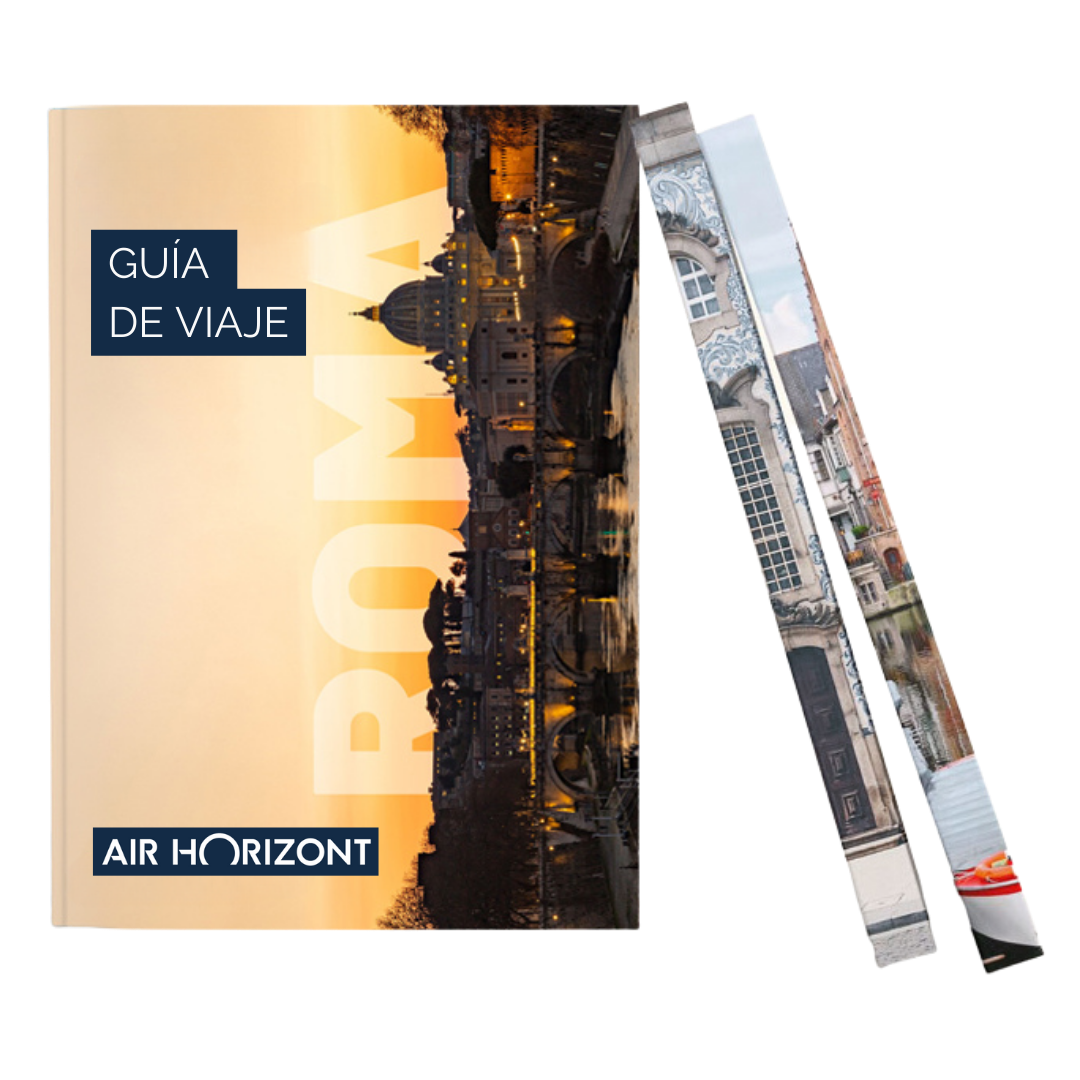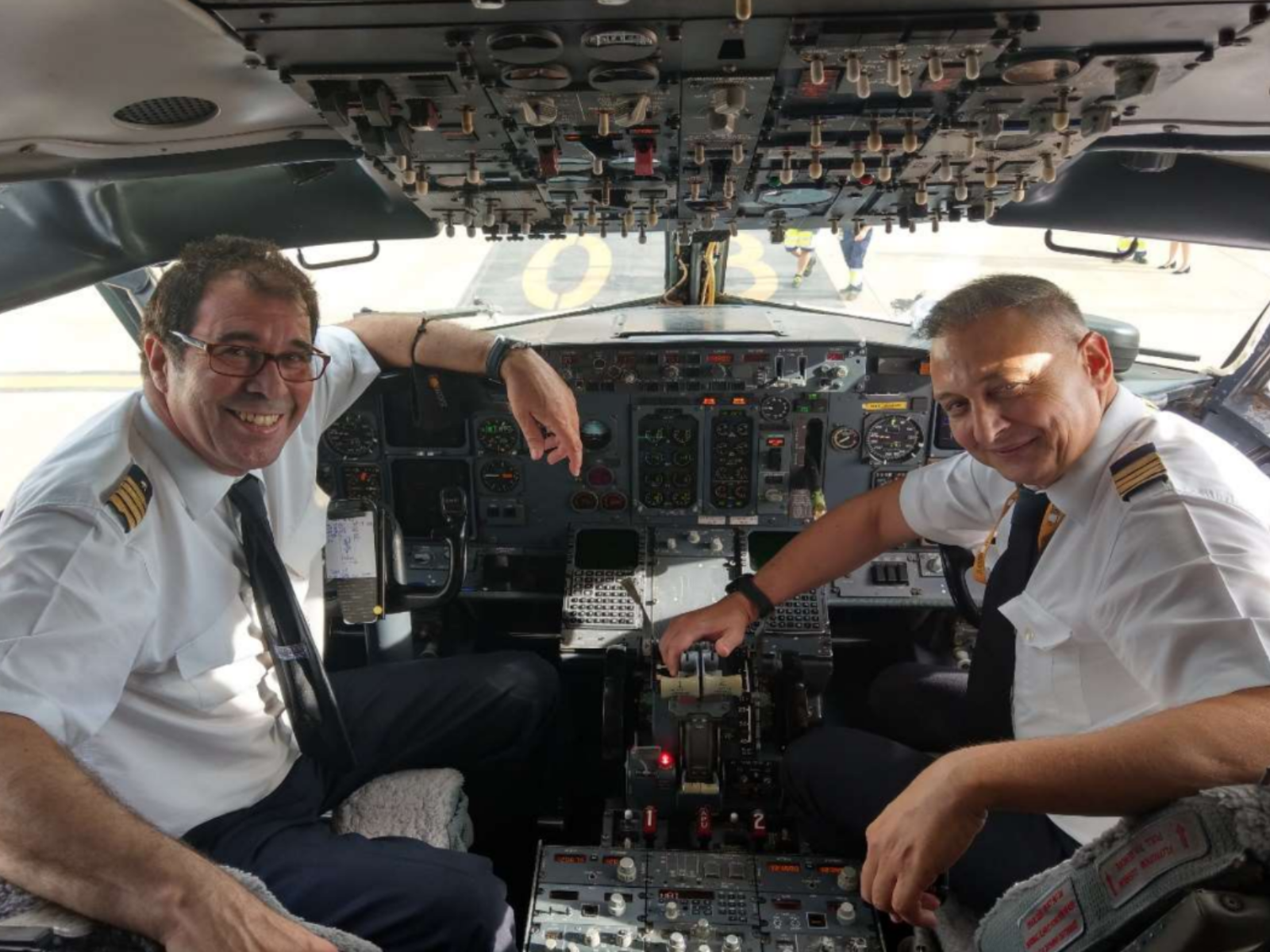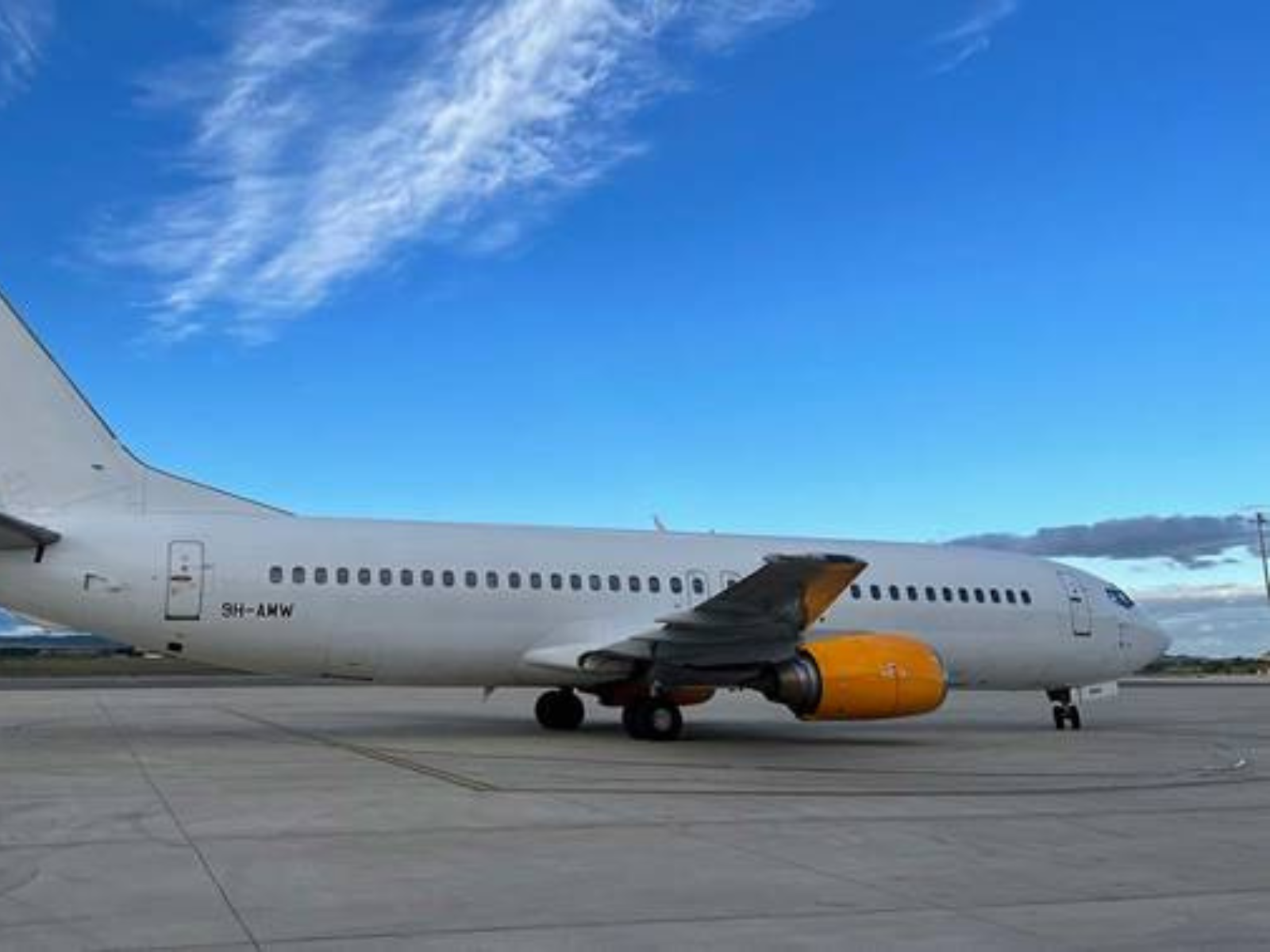Zaragoza, December 23, 2023
When we fly, we hear phrases that the crew pronounces over the public address system of the airplane that catch our attention, and you may have wondered about their meaning.
In this article, Juan Luis Díez, CEO and pilot of Air Horizont, tells us about some of the most common terms used on board an aircraft.
What is the crew up to with all that coded lexicon and English words? Is it a plot against the passengers?
Since the end of the last century, air travel has become one of the most common and organized events in modern life.
You arrive at the airport, let's say, with three hours to spare, check in your bag (if it's unavoidable), go through the controls -I admit that it makes me nervous too, even when I'm in uniform-, wait for some time, queue for another 20 minutes and finally board, if the last obstacle in the form of company personnel with yellow vests, is willing.
Once seated in your normally cramped seat - for God's sake, don't let me touch the middle one - you watch the gestures, safety demonstrations and words of the flight attendants, like someone who watches the commercials that precede the movie, or with absolute reluctance, but with the familiarity of someone who already knows what is going to happen and is comforted by the knowledge that nothing ever changes ...?
In addition to this, the phrases pronounced by the pilots add a plus of emotion to the situation: "here we are, this is going...". Also because they present the appeal of the technical jargon - and being in English, it sounds much better, where it goes... - all the passengers hear it, and the experienced "repeaters" know that this is a lexicon that is repeated in all the flights around the world. The crew understands it, and we are on our way, everything is ready, the passengers are ready, we are in good hands!
However, what does each of the phrases or acronyms that we can hear from the mouths of pilots or auxiliaries mean? Despite appearances, there is less mystery than you might guess at first glance -or hear- Let's take off!
"Tower, Skyrunner123 Runway 30, ready for departure".
Let's start with the people in charge of Security and Service on board, yes, those professionals who greet you at the aircraft door and greet you as you enter:
"TCP"
Cabin Crew in Spain and C.C. - Cabin Crew - in the rest of the world, except in some Latin American countries, where there is the curious denomination "Aeromozas/os"; this, surely, would not pass the cut of some ministry, but I find it nice. The term "azafata/o" has fallen into disuse, at least among those of us who work in this field.
"We close doors and assemble ramps."
Before that, however, it is necessary to count - several times - the number of passengers, which must coincide with the number foreseen and accepted for the flight, which has been given to the pilots by the Ramp Agent, together with the data of weight and bags to be transported; the most observant will have noticed a mysterious character with a fluorescent vest, who enters and leaves the flight deck before departure, yes, it is him. If both counts coincide, bingo, the "finger " -the gangway- or stairway is removed and the commander gives this order.
The message "close doors" seems clear, but what does it mean to set up the ramps? Each of the emergency exits has an inflatable ramp, which is referred to - which many will remember from great movies about aviation, far removed from reality, as I miss that saga of my childhood "Airport" - necessary for emergencies. It is a matter of removing the pin - a pin with an orange or red ribbon - blocking a metal bar on the door, which would allow automatic inflation when the door is opened in case of emergency.
We arrive safely to the parking position, after a comfortable flight, and we hear from theCockpit (Cockpit, for the neophytes), "doors at arrival and cross-chek", in Spanish we can also hear "desarmamos rampas", reverse process, we pass the security pin to unlock the bar and the door can be opened without the ramp deploying -there have been cases-.
"Cross-Check"
Basically cross-checking. That is, double-checking some procedure referred to by at least two crew members. In case the results do not match, one of the two - or both - will have made a mistake (as could be the case with passenger counting), so it will have to be repeated.
"ABP"
Term used by the Flight Attendants, referring to passengers who, in case of emergency, can help them at a given moment, to assist other passengers, an evacuation or an abnormal situation, etc. It is one of the first things they will notice while boarding passengers. It stands for able bodied passenger. It is not what it suggests, and better if they go in the emergency exits.
"PIL"
Like the previous one, commonly used by flight attendants, is the "passenger information list", that is, the list of passengers on the flight. It also reflects the special needs that each of these travelers may have, or if any "UM" (unaccompanied minor) is traveling, who, as it can not be otherwise, will require special attention.
"Secured Cabin"
Or "Cabin Secure"; is the term used by the senior flight attendant to let the rest of the crew know that all passengers are in place, belts fastened and that there is nothing in the "galleys " - their work area - that can inadvertently move, so that the aircraft can take off or land; in fact, in the pre-takeoff or pre-landing checklists, it is mandatory to receive that message on the flight deck. Now, it is all in the hands of the pilots. It is also used, at the commander's request, to ensure that the passenger is seated and belted in during a turbulence warning.
"Sterile Cabin"
Or "Sterile Cockpit"; no, we have not been ozone or UV rays to be disinfected. It is a concept initially applied in the United States during the 70s of the last century, and adopted today by - I hope all - airlines since the eighties. It refers to all those situations that are crucial for the flight, in which conversations or actions not related to the flight, eating or in general, anything that may distract the pilots, including entering the cockpit, are not allowed. The period from the time the aircraft begins taxiing until it safely climbs is a sterile cockpit, normally from takeoff to 10,000 feet (3,000 m), and on descent from 10,000 feet to the parking stand.
"ETD/ETA"
As"Estimated time of Departure" and "Estimated time of Arrival", punctuality is critical for the coordination of operations, we always work with these two concepts - and some others - to refer to the estimated time of departure or arrival at the destination or at a specific point.
"Pax"
This is how we call the passengers, there is not much mystery, it is for short, nothing offensive. It comes from "Passengers".
"APU"
"Auxiliary Power Unit" refers to a small engine located in the tail of the aircraft that powers the air conditioning and lighting while the engines are stopped, and also provides air pressure to start the engines. If it fails in summer, you're going to notice it - well, in winter too.
"FOD"
"Foreign Object Damage"; this one is more technical, and you won't normally hear it in a passenger cabin, and if you do, bad, we have a problem. It is defined as "any object deposited in the movement area of the airport which, as a result of being projected by the jet of aircraft engines or absorbed by aircraft engines may cause: Damage to vehicles, aircraft or persons due to FOD impacts", which implies a high risk to the safety of the operation. Bad thing, go call home to let them know you're late.
YOU WILL ENJOY READING


JOIN THE CLUB
"LIVE FLYING"
WHY WILL YOU LIKE IT?
In the club you will find...
- Promotions with special discounts only for subscribers.
- Travelers' meetings.
- Online travel chats, learn the secrets of the cities where we fly.
- Sweepstakes and contests.
- Top guides with the best secrets of the cities where we are going to escape.
- Visiting the cockpit of a Boeing 737, a photo you will love to have.
- Solidarity actions.
- Workshops from "losing the fear of flying" to "how to organize your getaway saving time and money".
- Ask the expert: everything you would like to know about the world of aviation and never dared to ask.
- Passenger stories. Share with your fellow club members the photo, anecdote or story that caught your attention during your trip.





